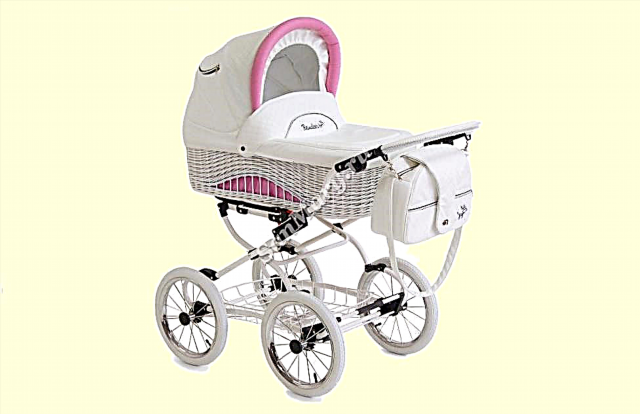
The vast majority of children cannot imagine life without heavy traffic, and one should not think that modern gadgets influence this so much - all the same, bicycles, scooters, skateboards and rollers remain in the top of the most desirable gifts. At the same time, technologies are rapidly developing, and the purchasing power of parents is gradually increasing, and today many adults are seriously thinking about pampering their child with a more serious vehicle. There is no doubt that a petrol ATV for children will delight any kid. However, many parents are a little afraid of purchasing an automated vehicle for a child, so let's try to figure out what it is and how to choose a model to make it safe.

Features:
The beauty of a children's ATV is that it gives the child the basics of driving a vehicle from an early age, and later it will probably be easier for him to master driving the same car.
At the same time, despite the serious gasoline nature of children's transport, most manufacturers declare numerous measures taken for the safety of the child, thanks to which you can become a driver even at the age of three!

First of all, the children's "quadric" is simplified as much as possible... All control is usually carried out on the handles, so control for a child is no more difficult than riding a bicycle. For the same great purpose, the transmission is usually installed automatically, and even the starter in many cases is not manual, but electric. In a word, he sat down at any moment - and immediately go, because there is nothing special to learn here, except for fitting into the turns.
It is clear that children's transport was created exclusively for recreational riding of lightweight passengers, and not for performing any serious work, because it does not have additional equipment, and such a compact unit itself weighs quite little. Thereby the ATV is very maneuverable, it is easy to go around any obstacles on it.
If the driver still made a slight mistake with the route, and the wheels are stuck, it will not be difficult to pull out the lightweight unit, even without assistance.


With all the desire on such transport you will not accelerate much, and you will not go far - a modest engine with a volume of no more than 50 "cubes" simply will not allow. However, if a rather adult and disciplined child with such technical data obediently rolls in the visible area and does not get into adventures, then parents can reasonably worry about a little tomboy, therefore manufacturers add additional control capabilities to the design. So, parental control allows you to limit the maximum acceleration of both 20 km / h and a modest 5 km / h, which is important for the smallest. In addition, adults can remotely turn off the engine if they see that the child has decided to play fugitive and go far, regardless of the parents' demands.


Kinds
The 4-pin kids ATV is a very easy vehicle to assemble, operate or maintain, and all devices of this type are about the same. Nevertheless, it is customary to divide small "quadrics" into some groups, and if the boundaries between them are not always clearly traced, then you must at least understand what this or that epithet can mean in the description of the all-terrain vehicle.


Four-wheel drive
Four-wheel drive for your own children's ATV is rather an unprecedented luxury than the norm, and much more often such a bonus can be found already on teenage or adult models. All-wheel drive is necessary for improved movement in capital off-road conditions - then the engine power is equally transmitted to both the front axle and the rear. This makes the vehicle much easier to get out of the trap - if the wheels on one axle are stuck, the other axle will continue to pull them and prevent them from getting stuck further.
Four-wheel drive ATVs are significantly more expensive and are essentially designed for off-road rallying. If you purchase a vehicle for a child no older than ten years old, then he hardly needs such a characteristic - the parents simply will not allow the child to ride where four-wheel drive is needed.


Mini
This concept is rather vague, but it is still intensively used by manufacturers of "quadrics" when describing children's models. For obvious reasons all children's models are mini in relation to adults - simply because they are designed for a smaller passenger and are deliberately equipped with a smaller engine.


In this case, you can find another explanation of the concept of "mini". Firstly, this is probably a fundamentally single ATV as opposed to the existing two-seater. Secondly, such a design severely limits the passenger's weight - roughly speaking, it cannot even theoretically be an average adult, and even a large kid cannot be taken away by a compact vehicle. Thirdly, all optional accessories have been removed from the device - this is a riding model, not intended for the installation of at least any additional equipment, cargo transportation, and so on.

Utilitarian
Such a characteristic, like all-wheel drive, rarely refers to the actual children's models, but it may be relevant for teenagers. Utility means the possibility of practical use for solving the widest possible range of tasks, because we are no longer talking about transport purely for skiing.
An adult utility ATV has an increased carrying capacity, can carry passengers and cargo, is suitable for off-road driving and sports training, and thanks to additional attachments it can even be used as a snowplow - in a word, a universal soldier.


According to this principle, the children's "utilitarian" differs from the adult only in a slightly more modest carrying capacity, which, however, is still higher than that of the classic children's models, counting on additional passengers, cargo and equipment. Preschoolers never buy such models, because they are not very small - this is more a gift for a teenager who can be responsible for the people being transported. In view of the increased carrying capacity, the unit may well be used by an adult driver, but then the additional load, of course, should be more modest.


Manufacturers
Many of our fellow citizens still believe that Chinese goods do not shine with outstanding quality, and in fact, one could even agree with this, if not for one thing: today, almost all goods are exactly Chinese, even if the brand is formally registered in Europe. USA or Japan.
This is especially true for children's ATVs, on which many parents want to save money, perceiving them as nothing more than a toy.


It is not always necessary to be afraid of this - it is not for nothing that Chinese goods have flooded the world, it's just that in this country, too, they finally learned how to do well. It should be understood that some firms have significantly better products than others and focus on popular names. At the same time, one must be prepared for the fact that some companies produce exclusively ATVs, and therefore they will be unfamiliar to the buyer, although they are considered very respected in their field. These are, for example, Motax, Dongma and "Polish" Farfello, also produced in the Middle Kingdom.
It is noteworthy that in recent years we have also mastered the production of children's ATVs, and in fact, domestic products are always quite affordable due to low wages in production and the absence of large logistics costs. By purchasing a Russian-made quadric, parents get increased chances for full-fledged service, and the likelihood of buying certified spare parts in the event of a breakdown also increases. At the same time, the names of Russian brands usually do not give out our fellow countrymen in them - such companies as Avantis and Stalker have achieved particular success.


How to choose?
As is the case with any other vehicle, a lot depends on the choice of a specific model - you can buy a sensible ATV, or you can waste money if the purchase simply does not fit, is of poor quality or breaks down quickly. For this reason, we immediately forget about the principle “the cheaper, the better” and pay more attention to the technical characteristics of each model.
- Without even going into details, you can roughly choose a children's ATV according to the age of the child for which it is intended... Manufacturers often indicate how old a driver should be. At the same time, you should understand that such estimates are only very conditional, and a unit for the age of 7-8 years will not be sufficient for a child who is really so much, but he is larger than his peers - then it is better to immediately take a model with an eye on 9-11 years. The broad concept of the described age range usually includes everything - both the dimensions of the seat, which directly affect the comfort, and the power of the unit, and even the complexity of controlling it.
- The best models in each category usually have all the necessary qualities, but it is not necessary to take only untwisted "quadrics" - it is enough to decide why exactly they are in demand and look for analogues. For example, in models for preschoolers, an automatic transmission is important, which greatly simplifies transport control, and a low center of gravity, which prevents rollover. In such a design, all potentially dangerous components are initially covered with casings. A remote control that allows you to remotely stop an unruly engine must be included. The engine power of such vehicles is always at the level of an electric battery, which means that they will not be able to take every modest slide yet.
- If the child is a little older, and this is not his first all-terrain vehicle, he will probably ride a little faster and with less parental control. You can trust your baby and buy a model with a more powerful engine, but even then at least there will be more body kits in the design - they protect against splashing dirt and flying stones, which can be a lot on the road.
- If the driver has already reached school age and has preliminary experience in driving a more modest ATV, parents are simply obliged to buy him a slightly more technologically advanced and complex model - it will be an excellent base for future driving training. As a rule, the complication of the design does not directly affect the control - both the automatic transmission and the brakes on the handlebars are left as they are. But they add different types of starters, side lights, different types of lighting, direction indicators, rear-view mirrors and a horn. Children consider the presence of a reverse gear especially cool - it turns a child's toy into a full-fledged transport. Little by little such little things develop a driver's culture, and therefore will really come in handy in the future.
How to manage?
- For obvious reasons, to control an ATV, and even more so for children, do not need rights considering that even a three-year-old child could potentially be the driver. Another thing is that there are certain rules that should be remembered first of all by adults who put a baby behind the wheel.
- Equipment... The ATV is a priori designed for riding on uneven roads, and you are unlikely to be able to make your child cut circles with a diameter of 10 meters around the yard - he will definitely find adventure for himself, and, as in the case of a bicycle, may fall off the ATV or overturn transport. This means that a helmet, goggles, gloves, long pants and sleeves are essential elements of protection. Explain to your child that wearing a helmet is your fundamental requirement, and you cannot take it off even when you cannot see it.
- Parking gear. The first compulsory skill for a driver of a "quadric" is to make sure that the vehicle does not roll while parked. When putting your baby behind the wheel, make sure that the all-terrain vehicle is in the parking gear, and start teaching your child exactly how to turn it on.
- Landing... In order not to fall out while driving, you must first sit down correctly. It is done like this: you need to put your foot on the near footboard, then throw the other foot onto the far footboard. When riding, your legs are always on the footpegs, and both hands are on the steering wheel, you must look forward in the direction of travel.
- Complete course of study. Before starting the engine for the first time, tell your kid about the purpose of all buttons and controls. First, you should take a full course of theory, even if you are sure that you don't need to know some functions for one circle around the yard! By skipping this moment, you will convince the child that he already knows how to do everything, and he will go far away at the first opportunity, without having fully mastered the control.
- Turns... This maneuver is the most dangerous while driving, therefore it must be trained especially carefully. Start with the engine off, simply pushing the vehicle with the driver in front of you and asking it to turn. Choose a flat area for training, without asphalt, but also without any obstacles. Explain to your child that before turning, always first turn your head and see where you are going to go.
- Start and jamming. From a psychological point of view, this is the most difficult moment for a baby - you will teach him to start and stop the engine, but you will not yet allow him to drive. Make sure that the child starts the engine correctly and knows how to turn it off - without this, you cannot go anywhere.
- Slow traveland. Set the speed limit to a minimum value, for example 5 km / h. Let your child start the engine and drive, but be there all the time - literally follow the ATV. Control the process, prompt and be ready to help. Ask your child to make smooth turns, gradually narrowing the radius, practice riding "eights".
- Further development of skills... When all the previous stages have been passed, it remains only to gradually improve the skills. Gradually increase the permissible speed limit, and when you see that the child is already confidently maneuvering, go to sites with more difficult terrain. Over time, the baby can be released to ride unattended.
For information on how to choose the right children's ATV, see the next video.



